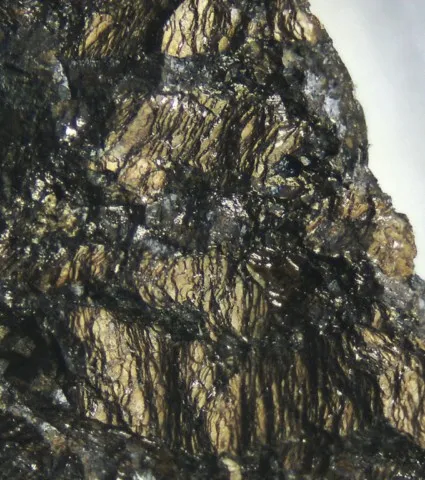PENTLANDITE
Class : Sulfides and sulfosalts
Subclass : Sulfides
Crystal system : Cubic
Chemistry : (Fe,Ni)9S8
Rarity : Quite common
Pentlandite is a fairly common sulfide of iron and nickel, which may contain several percent cobalt. It is mainly a sulfide of magmatic origin linked to basic rocks and in particular to norites in mafic stratified complexes. More rarely, pentlandite appears in thin areas in serpentinites, associated with other nickel minerals (heazlewoodite). It was named in honor of the Irish naturalist Joseph Barclay Pentland who was the first to study the mineral. Pentlandite occurs in small, disseminated grains or in centimeter-sized masses, gathered in levels rich in more or less massive sulfides where pyrrhotite dominates. The distinct crystals are exceptional but can reach large dimensions : they are generally octahedra which can reach up to 10 cm. Pentlandite has a metallic luster and a light bronze-yellow color, as well as good cleavage according to {111}. It is the main nickel ore, ahead of garnierite.
Main photo : Pentlandite from the serpentinites of Piasco, Piedmont, Italy © Peter Lof
Pentlandite in the World
Twinning
No twins known for this mineral species.
Fakes and treatments
No fakes listed for this mineral species.
Hardness : 3 to 4
Density : 4.6 to 5
Fracture : Conchoidal
Streak : Brown-bronze
TP : Opaque
RI : -
Birefringence : 0
Optical character : None
Pleochroism : None
Fluorescence : None
Solubility : -
Magnetism : ParamagneticRadioactivity : None

